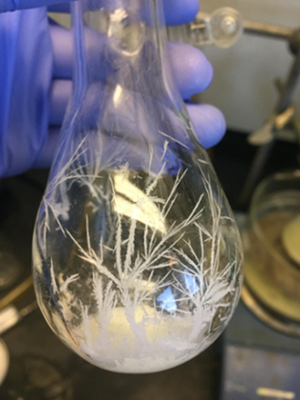Testimonials
What researchers are saying
See what campus researchers are saying about the Library's research data curation services.
Thomas E. Levy, Anthropology
“By working together, we have created the perfect permanent solution to digital cultural heritage data curation by ingesting it into our campus research library.”
“When archaeologists and cultural heritage researchers carry out expeditions around the world, excavate, record ancient monuments and texts, one of the biggest questions concerns data storage. What will happen to my data when I'm gone? Will it be left on a stack of hard drives and subsequently lost forever? Around 15 years ago, I began to collaborate with the Geisel Library's Digital Collections team which is composed of a wide range of experienced information technology specialists and data scientists. They were written into several of my grants, most recently a University of California Office of the President Catalyst grant focused on "At-Risk Cultural Heritage and the Digital Humanities." Today, all our lab's finished excavation data is freely accessible and curated as part of the Digital Collections at UC San Diego. By working together, we have created the perfect permanent solution to digital cultural heritage data curation by ingesting it into our campus research library. As such, together, with the Geisel Library, we have created an important model for cultural heritage data storage and accessibility for the national and international community.”
Thomas E. Levy
Norma Kershaw Chair
Department of Anthropology
Director, Center for Cyber-Archaeology and Sustainability (CCAS), Qualcomm Institute
Co-Director Scripps Center for Marine Archaeology (SCMA)
The photograph (above), taken by Thomas Holm, is part of Kastrouli Mycenaean Excavations, Greece 2016, a collection of files relevant to the 2016 archaeological excavations of the site Kastrouli, Greece including artifact, photography, geospatial, and other data.

Glen Junor, Chemistry & Biochemistry
“UCSD Library Digital Collections allowed us to make our small molecule computational data available for direct download, where no satisfactory repositories exist.”
Glen Junor
5th year PhD Candidate
Chemistry & Biochemistry
“UCSD Library Digital Collections allowed us to make our small molecule computational data available for direct download, where no satisfactory repositories exist. As a result, our hard-earned data, resulting from days of intensive supercomputer computation, is available for direct download by the public, ensuring widespread accessibility to our important discoveries.
Further, working with the Research Data Curation Program staff helped us organize our results and improve our overall data communication strategies. For example, as a chemist I communicate with my peers through 2D or 3D drawings of molecular structure, whereas the general public and scientists in other disciplines are often unfamiliar with such a communication style. The program staff helped us find ideal object-component data structures for our results to improve searchability and readability. Not only is the deposition, review, and metadata revision processes easy to do, but the program staff really consider how to best curate our data and provide organizational suggestions that are truly insightful.”
Glen Junor
5th year PhD Candidate
Chemistry & Biochemistry
Photograph (above) taken by Glen Junor. This picture is of aminoborane crystals that formed during the creation of the dataset Data from: Readily Available Primary Aminoboranes as Powerful Reagents for Aldimine Synthesis
Clinton Edwards, Scripps
“Only with the incredible support and guidance of the UC San Diego Library data curation team have we been able to continue the pace of data collection, while keeping these data secure, discoverable for our colleagues.”
“I am a graduate student in the Sandin Lab at Scripps Institution of Oceanography, UC San Diego. A major effort currently underway in our lab is the 100 Island Challenge, a project that has taken us around the world to describe variation in coral reefs. When I began my studies, I was taught to use the traditional tools of the trade to handle and store my data: hard drives housing Excel spreadsheets, and a few gigabytes of underwater imagery. Now just five years later, I have helped collect over 10 million images that have been used to create detailed 3D models of thousands of reef plots, together representing over 300 terabytes of information!! Only with the incredible support and guidance of the UC San Diego Library data curation team have we been able to continue the pace of data collection, while keeping these data secure, discoverable for our colleagues. I look forward to continuing to expand our relationship with the library as we make our data available to the public through the Digital Collections.”
Clinton Edwards
Graduate student
Sandin Lab at Scripps Institution of Oceanography
The digital object Maui Nui 2019-05 (Expedition) - Kaho'olawe (Island) - Raw Images, including the preview image Kaho'olawe_2019-05-23_KAH_03, shown above, contains 3D models generated from the raw images for Kaho'olawe, Hawaii and is courtesy of the 100 Island Challenge Project; the Division of Aquatic Resources, Maui; and Smith Lab, Scripps Institution of Oceanography, UC San Diego.
|
Previous page: This image is courtesy of Keng-Lou James Hung and David A. Holway and is featured in the digital collection Data from: Urbanization-induced habitat fragmentation erodes multiple components of temporal diversity in a Southern California native bee assemblage. |
